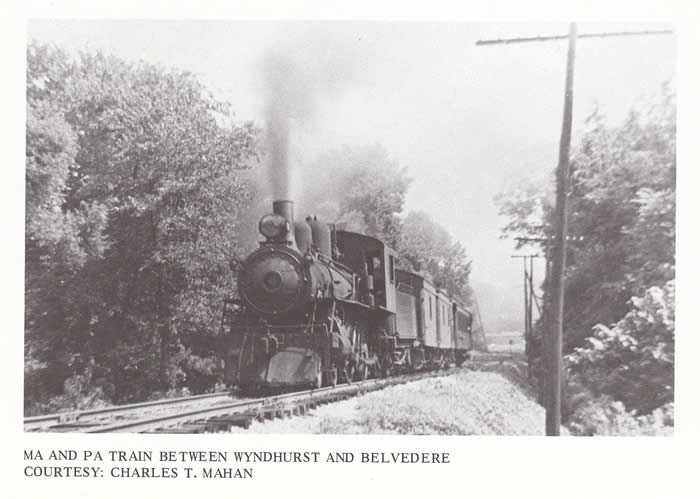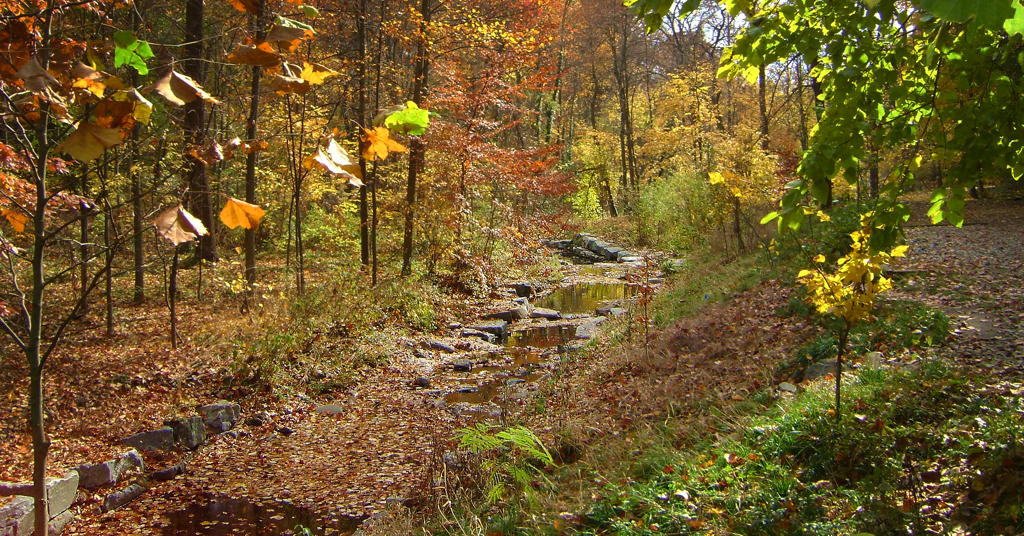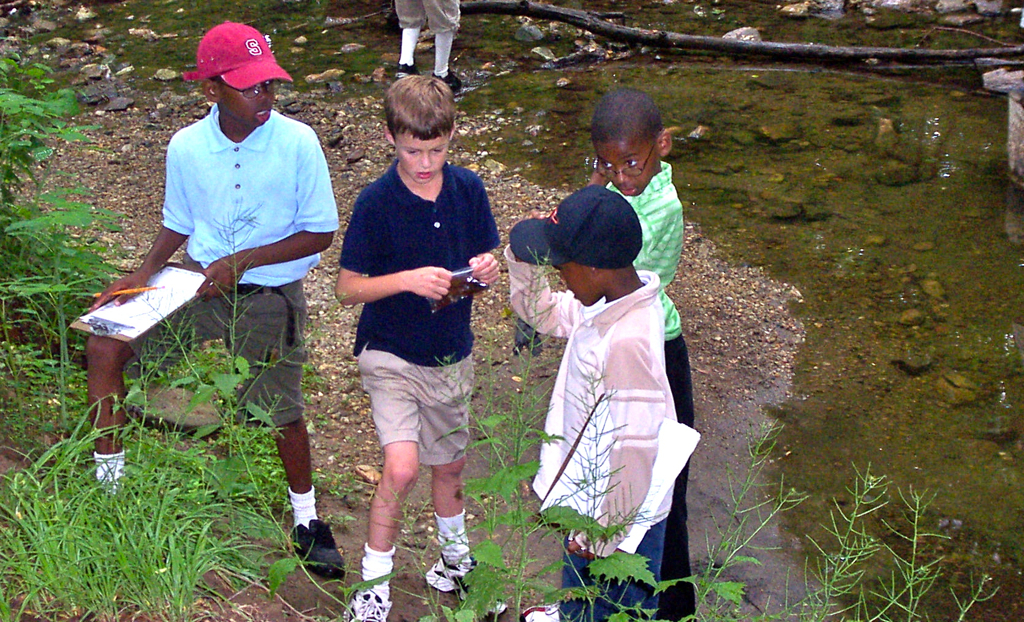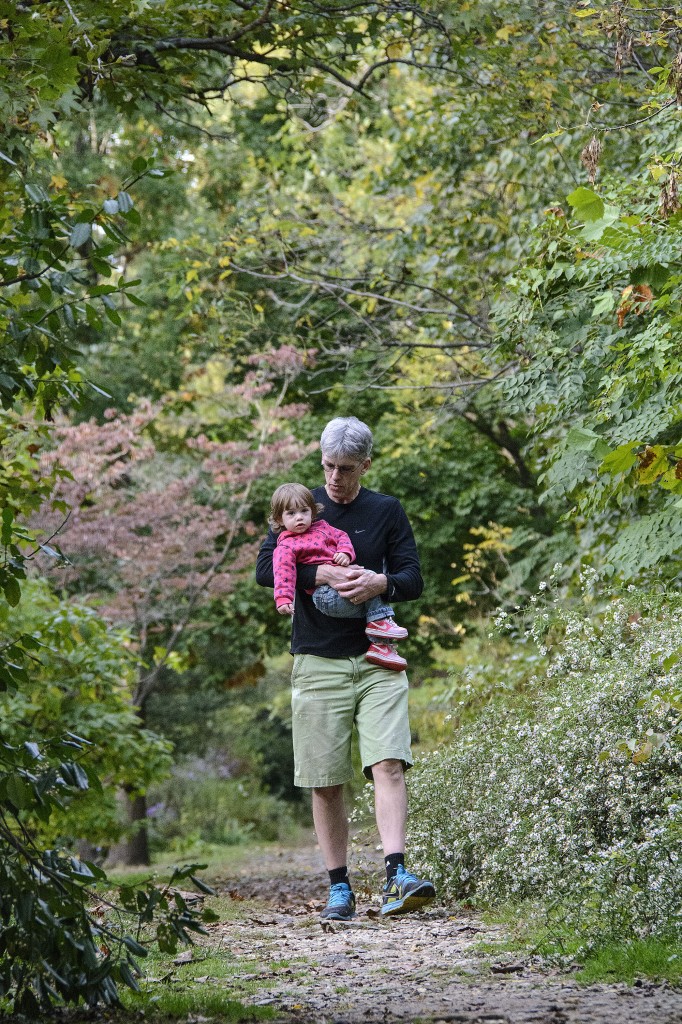Stony Run: The Hidden Path that Connects Us All
[Note: We are excited and honored to share this guest post by Mary Page Michel, Chairman of the Roland Park Community Foundation. This article first appeared in the Winter 2013-2014 edition of the Roland Park News.]
There is a love affair happening in our neighborhood. No, this is not a mid-life crisis or a passing fling, but a long-standing relationship with a beloved park. The number of people who adore Stony Run will surprise you.
The Stony Run Path is a woodland trail that follows a stream running parallel to Charles Street and Roland Avenue. The stream begins below ground, on the property of the Elkridge Club north of Lake Avenue, reemerges across from the Bryn Mawr School north of Northern Parkway, and flows 3.3 miles south before emptying into the Jones Falls, near the Kirk Stieff Building on Sisson Street.
Many residents consider Stony Run Path a secret because there is no official entrance, but this hidden highway connects 15 neighborhoods, five schools, three colleges and three city parks. Walkers, runners, birdwatchers, an occasional biker and plenty of dogs enjoy the scenic trail, which follows the stream through communities, under bridges and behind schools.
The Greater Roland Park Master Plan (Master Plan), approved by the City in 2011, suggested dozens of Open Space improvements, but three soon rose to the top of the list. Improvements to Stony Run, the restoration of the Roland Water Tower and the purchase of the surplus Baltimore Country Club land became the campaign’s foremost projects.
So why is Stony Run so important to our community?
To love Stony Run, one must really understand its place in history. The Stony Run walking path replaced the rail bed of a train line that predated most of the surrounding neighborhoods.

- “Ma and Pa” train between Wyndhurst and Belvedere, circa early 1950s. Photographer: Charles T. Mahan. Photo courtesy of Roland Park Revisited.
The Baltimore and Delta/Maryland Central first began a train service to Towson in 1882, becoming the Baltimore and Lehigh Railroad through a merger in 1891. By 1894, due to bankruptcy, the line was split in two, but in 1901, Alexander Brown and Company purchased the two portions to form the Maryland and Pennsylvania Railroad, affectionately referred to as the “Ma and Pa.”
Until 1958, the Ma and Pa ran from Baltimore to York, Pa., taking roughly four hours to transport passenger and freight cars from one city to the other. The two cities are only 49 miles apart, but with an astonishing 476 curves in the route, the rail line measured 77 miles long.
What an amazing sight it must have been to see a steam locomotive cutting through the neighborhood!
Roland Park resident Anne Perkins remembers as a young girl being dropped off at Wyndhurst Station and taking the Ma and Pa train out to her grandparents’ store in Towson or to their home in Bel Air. There are also reports of Gilman students jumping on the back of the Ma and Pa to get quickly to and from home.
Another wonderful historical note involves the renowned landscape architect Frederick Law Olmsted and his sons. In 1904, the Olmsted firm was commissioned to create a report on how to develop the park system in Baltimore City.
The Olmsted’s drew attention to Stony Run in their vision of stream valleys connecting parks and parkways. The report states that “here (Stony Run), as well as on Gwynn’s Falls and Jones Falls, it is of the greatest importance that some way should be found for preserving for public enjoyment and passage this natural channel of communication with the adjacent territory. Smaller in scale than either of the other valleys, it has a great deal of charm of its own.”
When competition from cars, trucks, buses and other railroad lines forced the Ma and Pa to close in 1958, the city considered using the right of way for a one-way freeway or a bus-only road, but decided against it as some sections were only 30 feet wide.
Instead, the rail lines were pulled up, some slivers of land were sold to adjacent homeowners, and Stony Run Path began to take shape, much of it as a thin, elevated pathway. For more about this fascinating story, read George Hilton’s book, The Ma and Pa.
Yet difficult times lay ahead for the trail.
In 1995, BGE/Constellation Properties proposed commercial development of a four-acre tract of land in the Evergreen neighborhood, adjacent to Stony Run. The Evergreen community, then chaired by Jake Eldridge, fought the requested zoning change with letters, petitions, lobbying and an excellent land use attorney, John Murphy.
Their efforts succeeded and this property was later sold to the Bolton Street Synagogue, which worked closely with the Evergreen neighborhood to negotiate the terms of the agreement. In 2002, the Synagogue sold the north meadow to the City for use as a community park for $150,000 of Program Open Space funding.

- Exploring the stream. Photo © Sally Foster
The $10 million Federal Stormwater Management Project from 2006 to 2008 was another stressful period in Stony Run’s history. Baltimore City needed to comply with state and federal guidelines to prevent the discharge of pollutants from the stormwater management system into the waterways. Stony Run, with a watershed of 2,112 acres, was one of the priority streams.
The City of Baltimore Department of Public Works, under the direction of William Stack, partnered with the Jones Falls Watershed Association (now part of Blue Water Baltimore) to host several community meetings and presentations. Residents were concerned about the plans to remove 150 trees and significantly reshape the stream, but erosion was taking a terrible toll on Stony Run, with trees washing into the water.
The work began and the stream was raised up in some spots from underground pipes, wider curves were introduced, trees were removed, steep banks were flattened, u-shaped dams were constructed and boulders were added. All of these efforts aimed to slow the flow of water, resulting in less flooding, reduced erosion and more filtering of the stormwater to reduce pollution. After the stream reconstruction, more than 200 trees were planted, as well as thousands of native shrubs and wetland plants. Residents were happy with the stream’s appearance and the environmental benefits.
Ongoing community involvement has made Stony Run the gem it is today. For decades, volunteers have helped with clean-ups and plantings; individuals have lobbied in City Hall and written grants; teachers have taught local students about the health of the stream; and artists have enacted plays, created sculpture from the trash found in Stony Run and displayed art throughout the path.
The Wyndhurst and Evergreen neighborhood associations have formed Parks Partnerships with the City Department of Recreation and Parks. This allows community maintenance of their portion of the trail and provides an opportunity to compete for a special pool of grant funds from the Parks & People Foundation.

- A group of Gilman students doing stream studies for science class. Photo: © Mary Page Michel
Dr. Michael Beer exemplifies our neighborhood’s love for Stony Run. A Johns Hopkins biochemistry professor, Dr. Beer moved to Roland Park in the 1960s and made it his passion to improve Stony Run. He has planted and maintained trees, researched and introduced native plant species to the park—carefully logging and tracking every species to monitor their progress.
He also lobbied the Mayor’s office, starting with William Donald Schaefer, and recruited volunteers. His wife, Margaret, shared his love of the park and after her death, members of the community placed a bench in her honor near the Oakdale Road entrance. Although Dr. Beer has now moved a few miles away, he still meets a loyal crew at 8:30 a.m. every Monday to pull invasive plants off the trees. Without Dr. Beer and scores of dedicated volunteers like him, Stony Run would not have achieved its current beauty.
The Greater Roland Park Master Plan seeks to build on these decades of commitment.
The Master Plan’s first Stony Run effort included a partnership with the The Associated, Chesapeake Bay Trust, Blue Water Baltimore, and the Bolton Street Synagogue. As part of a larger sustainability initiative, the Synagogue agreed to convert 17 parking spaces at their lower parking lot, behind the old bank building on Cold Spring Lane, to a woodland path.
Workers removed 3,400 square feet of asphalt and the Stony Run path, which previously ended at the back of the parking lot, was allowed to continue. The $24,000 project was funded by a $10,000 grant from the Roland Park Community Foundation, $10,000 from the Chesapeake Bay Trust and $4,000 from Blue Water Baltimore. Led by the Associated Jewish Community Federation of Baltimore, Blue Water Baltimore coordinated the construction, with volunteer support from the community.
In 2011, the Master Plan Committee, led by Phil Spevak, met in Annapolis with elected officials from the 41st and 43rd districts to ask for help with funding improvements to Stony Run. Coincidentally, a group from the Lower Stony Run was also asking for funds. The Lower Stony Run Group, which later changed its name to the Friends of Stony Run, submitted a joint request with Roland Park for $600,000 from the Maryland Department of Natural Resources (DNR), which was approved by the state legislature in the 2012 session.
An additional $600,000 was then approved in the 2013 session. Delegates Sandy Rosenberg and Maggie McIntosh deserve special thanks for their assistance with this process. The Friends of Stony Run has been an important partner as they have worked hard to gather all 15 neighborhoods adjacent to Stony Run to reach consensus on the goals for the path.

- A park for all ages. Photo © Sally Foster
First is to create safer crossings to connect the Stony Run Path at Wyndhurst Avenue and Cold Spring Lane. Spend a few minutes at any one of these intersections, and you will realize the number of pedestrians and runners using the trail, as well as the volume of cars speeding by. The crossings will narrow the roadway, by making the sidewalk bigger, and shorten the crossing distance. The crosswalks will also be made out of a different surface to help slow the traffic.
Second is to acquire the privately-owned rights-of-way that intersect Stony Run. When the Maryland and Pennsylvania Railroad Company closed, they sold these slivers of property to the adjacent homeowners. Understandably, the city is not interested in investing in the park if it is not a public space. In 2007, for example, the Wyndhurst Improvement Association was disappointed to discover that some portions of Stony Run were not included in the Federal Stormwater Improvement project because they were not public lands. To date, the three most critical parcels have been donated or sold to the City, including two in Wyndhurst. We particularly appreciate the efforts of Mrs. Adam Cockey, who was the first owner to donate her property, and Hank and Beth Ratrie for agreeing to sell their parcel at a major discount. These land transfers are appreciated and necessary to create a true community path.
Third, the existing bridge that crosses the stream south of Linkwood Road is precarious and urgently needs to be repaired.
Finally, the Master Plan aims to build a new bridge just north of University Parkway linking the two sides of Stony Run. This will allow people to access Wyman Park without having to go up and over the Parkway. The DNR funds will cover the design work on this bridge, which the Tuscany-Canterbury neighborhood has dreamed of for more than 15 years, but more funds will be needed to complete the work.

- This article was originally published in the Roland Park News, circulated quarterly to residents of Roland Park. Click here to get a copy or to advertise.
In order to truly appreciate the beauty and value of Stony Run to Greater Roland Park, one must understand the history of how it was formed and the challenges it has faced.
But the most exciting chapter in this story has yet to be written.
The Roland Park community will continue to partner with Baltimore City Recreation and Parks, as well as the new Friends of the Stony Run group and the other neighborhoods with which we share this stream.
There is still much to be done, including the completion of the new bridge, the creation of a master plan for the park, improvements to the entrances from congested side streets and ultimately to create a maintenance endowment.
With a history of dedication by so many, and a record of success and measurable progress, the future looks bright for our hidden treasure.
Special thanks to Amy Bonitz, Greater Roland Park Master Plan Stony Run coordinator, and Trudy Bartel, Chair of the Friends of Stony Run, for their contributions to this article.





